Many dog owners repeatedly face the same problem: Their four-legged friend is smacking their lips, eating more grass, or suddenly exhibiting a loss of appetite. Often, the cause is heartburn – a problem that can affect not only humans but also dogs.
Heartburn causes constant stress, discomfort, and pain for dogs. Yet it often goes undiagnosed because the symptoms are misinterpreted.
In this article, you'll learn what causes heartburn in dogs, how to recognize the symptoms, and which foods really help.
1. Causes of heartburn in dogs
Heartburn is caused by the backflow of stomach acid into the esophagus, a phenomenon known as gastroesophageal reflux (GER). Normally, the lower esophageal sphincter (a circular muscle at the junction of the esophagus and stomach) prevents the backflow of gastric juice. However, if this muscle is weakened or opens uncontrollably, acidic gastric juice can enter the esophagus and irritate the lining of the esophagus (Hall & German, 2021).
Gastric acid , consisting of hydrochloric acid (HCl), pepsin, and other enzymes, serves to digest and fight off pathogens. If too much gastric acid is produced or remains in the stomach for too long, the risk of reflux increases. Factors such as a high-fat diet, obesity , or increased production of the hormone gastrin can contribute to increased acid secretion (Freeman et al., 2018).
Recurrent reflux can damage the esophageal lining and trigger inflammatory processes , known as reflux esophagitis . This inflammation can cause pain, difficulty swallowing, and, in severe cases, mucosal changes (Gaschen, 2019).
2. Causes of heartburn in dogs
Heartburn in dogs can be triggered by various factors. A common cause is an improper diet with food that is too fatty, high in protein , or highly seasoned . Such foods stimulate stomach acid production and can irritate the mucous membranes (Hall & German, 2021). Fixed feeding times, a change in diet, or excessively large portions can also put a strain on the stomach and promote acid production. Swelling food with poor digestibility can also be a cause.
Some dogs are also naturally prone to increased gastric acid production, which is particularly common in certain breeds such as bulldogs, Great Danes, or pugs, as well as in obese or pregnant dogs (Freeman et al., 2018). Stress—e.g., environmental stress, training, noise, being alone, or changes in the environment—can also trigger heartburn. Finally, food intolerances or gastritis as an underlying condition often lead to heartburn (Guilford & Marks, 2017).

3. Symptoms of heartburn in dogs
Dogs with heartburn often exhibit noticeable behavioral changes. Frequent lip smacking , excessive licking of the lips, or increased swallowing are typical signs. A lowered front body position is also common. Many dogs instinctively eat grass or soil to neutralize stomach acid or appear restless and irritable. Belching, gagging, and bad breath can also be signs (Gaschen, 2019). In severe cases, loss of appetite, vomiting of yellow foam, or weight loss may occur. If symptoms persist or occur regularly, a veterinarian should be consulted.

4. How the right diet helps with heartburn
The right diet can protect the stomach lining , regulate gastric acid production, and balance the pH level in the stomach. Easily digestible proteins from lean meats like chicken or turkey place less strain on the stomach and reduce the need for high levels of acid production for digestion (Guilford & Marks, 2017). Carbohydrates like oatmeal or potatoes bind excess stomach acid and can protect the stomach lining.
Certain foods also have a soothing effect on the stomach lining . Natural yogurt or cottage cheese contain probiotic bacteria that stabilize the stomach environment and counteract inflammation (Freeman et al., 2018). Fats , on the other hand, should only be fed in small amounts , as they slow gastric emptying and thus increase the risk of reflux (Hall & German, 2021).
A fiber-rich diet can also help by regulating stomach movement and ensuring smooth digestion. Vegetables such as pumpkin, carrots, and zucchini, in particular, contain fiber, which binds food and protects the stomach lining. Eating several small meals and not having fixed feeding times throughout the day also prevents too much stomach acid from being produced at once, reducing the risk of reflux (Gaschen, 2019).

5. Home remedies and supportive measures
Some home remedies can help alleviate symptoms. Healing clay is known to bind excess stomach acid and soothe the stomach. Slippery elm bark in water, on the other hand, forms a protective layer on the stomach lining. Caution: Because the stomach lining impedes nutrient absorption, it should not be fed continuously. Chamomile or fennel tea also have a relaxing effect on the gastrointestinal tract and can be offered in small amounts (Freeman et al., 2018).
Additionally, it can help to place the bowl slightly elevated so that stomach acid doesn't flow back into the esophagus as easily. After eating, the dog shouldn't immediately romp or jump, as this can worsen the symptoms.
6. When should you see a veterinarian?
Occasional heartburn can often be managed with a change in diet and home remedies . However, if symptoms occur frequently or are accompanied by vomiting, weight loss, or excessive salivation, a veterinarian should be consulted. In such cases, a serious condition such as gastritis or a stomach ulcer may be present, requiring specific treatment (Gaschen, 2019). Even if a change in diet does not improve the condition, a veterinary examination may be advisable.
💡 Conclusion: The right diet to prevent heartburn
Heartburn can be uncomfortable for dogs, but it can be effectively avoided with the right diet and a few preventative measures. A gentle diet, avoiding spicy and fatty foods, and several small meals a day can help alleviate the discomfort. If symptoms persist or worsen, a veterinary examination is recommended. A customized diet can ensure your dog's long-term well-being.
Sources
Freeman, LM, Chandler, ML, Hamper, BA, & Weeth, LP (2018). "Current knowledge about the risks and benefits of raw meat-based diets for dogs and cats." Journal of the American Veterinary Medical Association , 253(11), 1549-1558.
Gaschen, FP (2019). "Gastrointestinal disorders in older dogs." Veterinary Clinics: Small Animal Practice , 49(4), 569-583.
Guilford, W.G., & Marks, S.L. (2017). "Gastrointestinal Pharmacology in Small Animals." In: Clinical Veterinary Advisor: Dogs and Cats . Elsevier Health Sciences.
Hall, E. J., & German, A. J. (2021). "Diseases of the stomach." In: Textbook of Veterinary Internal Medicine . Elsevier.
FAQ
What does "open declaration" mean?
The " open declaration " in the context of dog food refers to the transparent disclosure of information about the composition of the food in terms of the individual ingredients and their processed quantities.
"Open declaration" means that we transparently list all ingredients and their exact percentages in Alpenwuff food. So you always know exactly what's in every bag of Alpenwuff.
An open declaration serves to give pet owners clear information about the food so they can make informed decisions about their daily diet. By reading the declaration, pet owners can determine which main ingredients are contained in the food. This helps to rule out allergens, evaluate the quality of a food, and develop an understanding of a dog's behavior. For example, if a food consists primarily of corn, this is often reflected in its behavior. An open declaration therefore makes it possible to ensure that the food meets the dog's individual needs and promotes its health. In addition, the declaration ideally includes information about the manufacturer and the manufacturing process, which creates confidence in the product quality and traceability of the raw materials.
Why should cold-pressed food be better?
The comparison between extruded and cold-pressed dog food can be shown using several aspects that illustrate the advantages of cold-pressed food:
- Gentle manufacturing process: Cold-pressed feed is produced at lower temperatures (60°C). In contrast, extruded feed is produced at high temperatures (up to 200°C), resulting in a greater loss of natural nutrients.
- Better nutrient preservation: The gentle manufacturing process helps to better preserve the natural nutrients of the ingredients, similar to steam cooking. Due to the gentle temperatures, natural vitamins and nutrients in cold-pressed food remain largely intact.
- Better digestibility: Cold-pressed food breaks down quickly into its components in the dog's stomach and doesn't bloat when exposed to liquid like most extruded food briquettes. This means the nutrients are quickly accessible and digestible. The easier digestibility of cold-pressed food can help dogs experience fewer digestive problems. This leads to less bloating and an overall happier dog.
To what temperature is the food heated?
Our feed is gently cold-pressed at low temperatures to preserve nutrients. The cold press reaches a maximum temperature of approximately 60°C.
"Food without compromise" - We want more dogs to be fed healthy food!


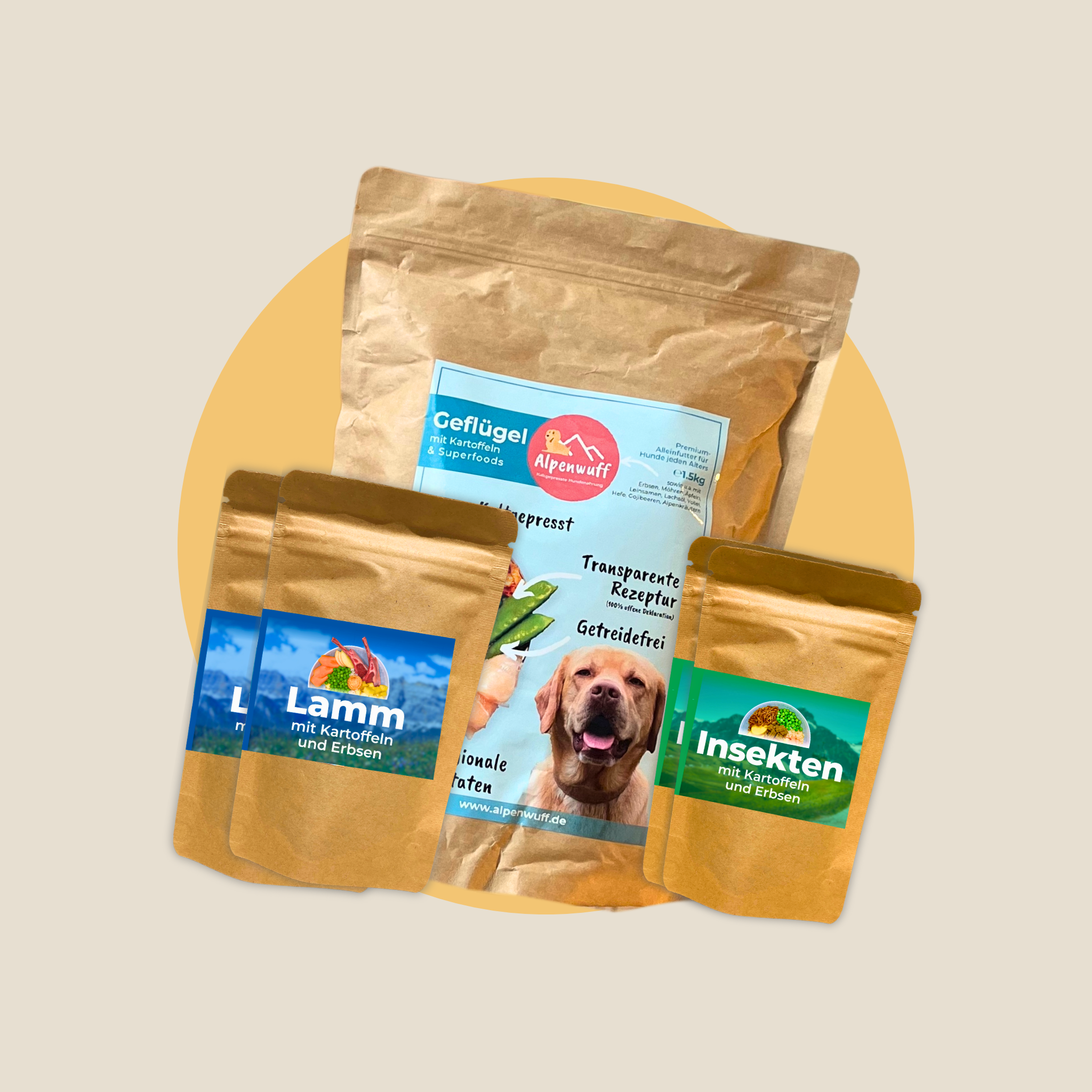
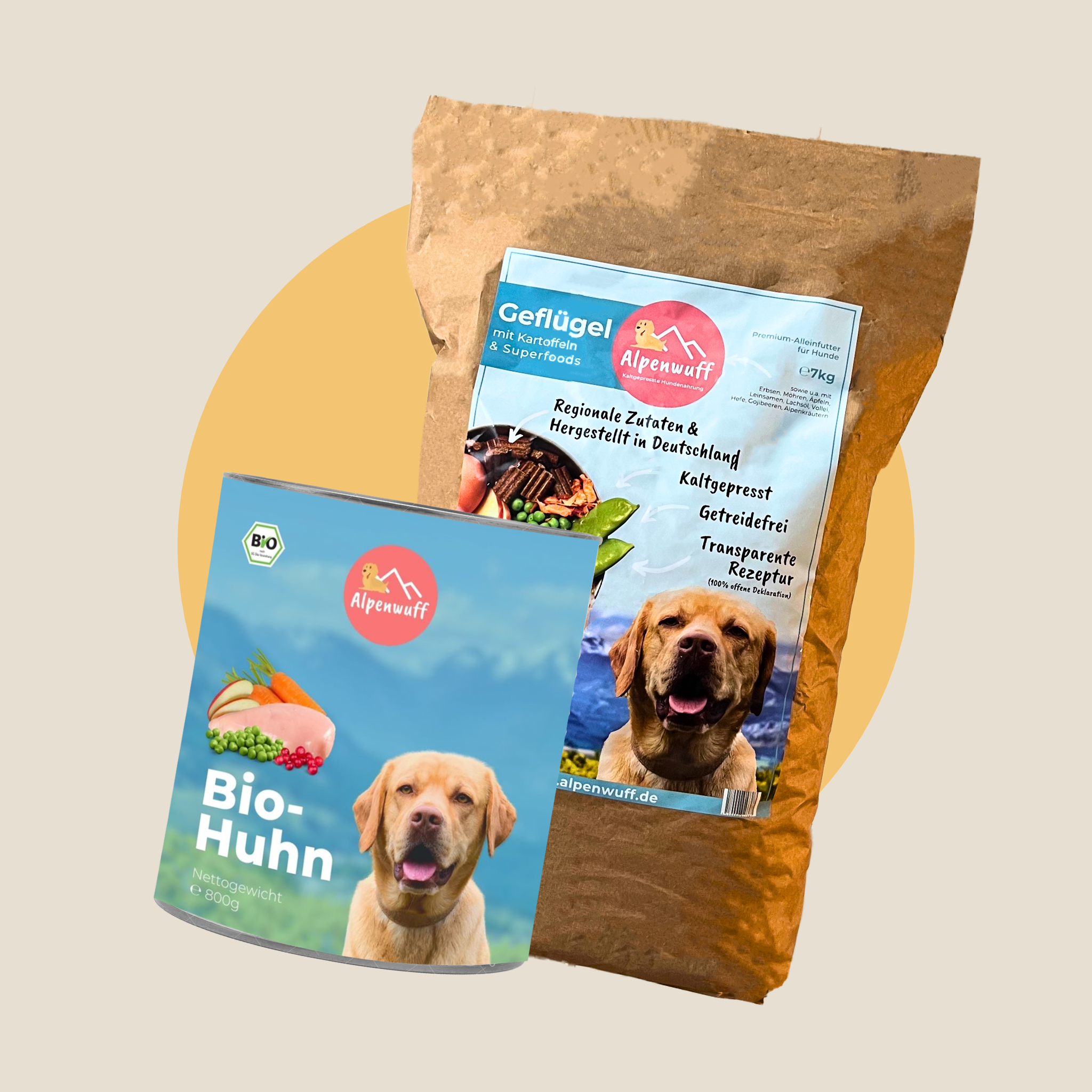
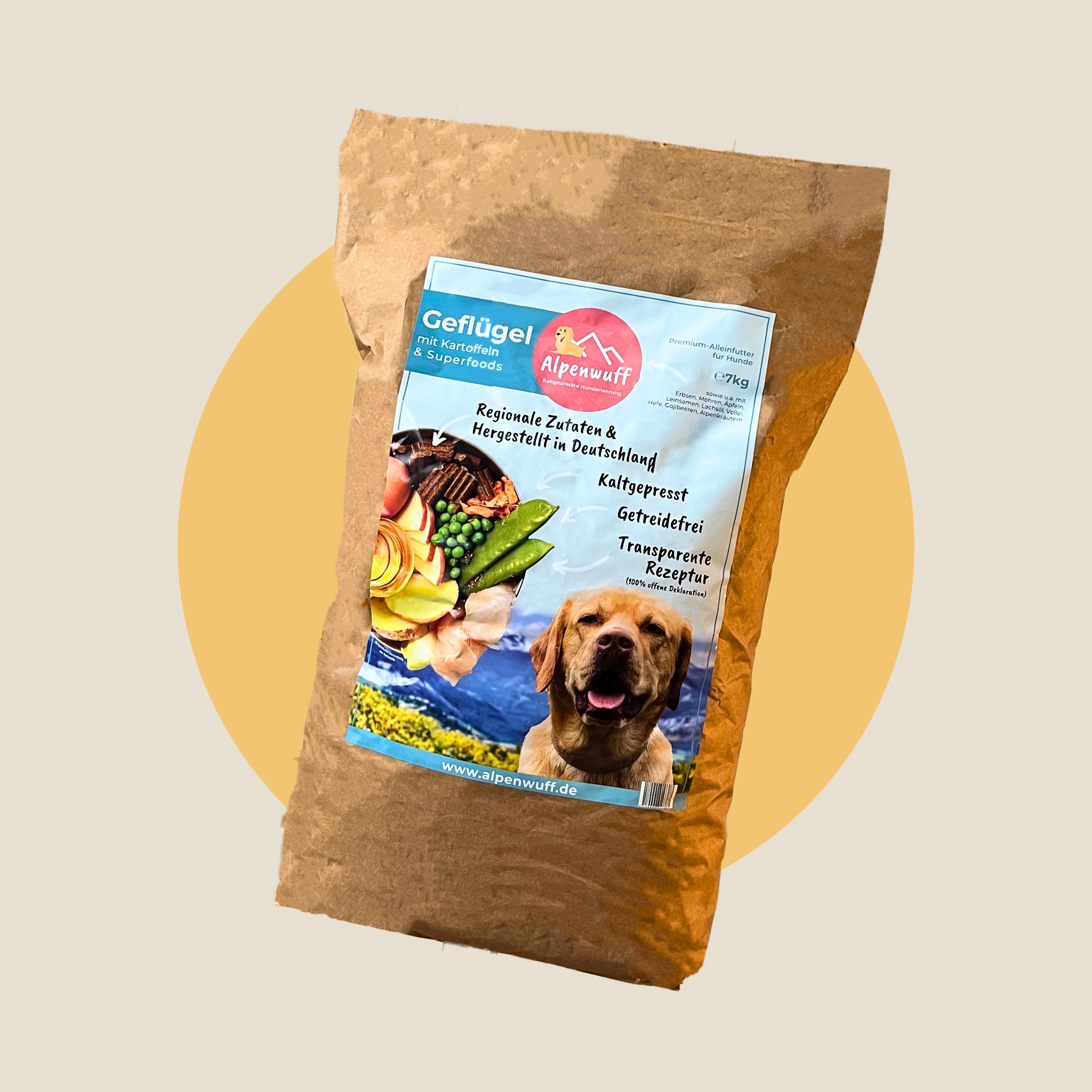
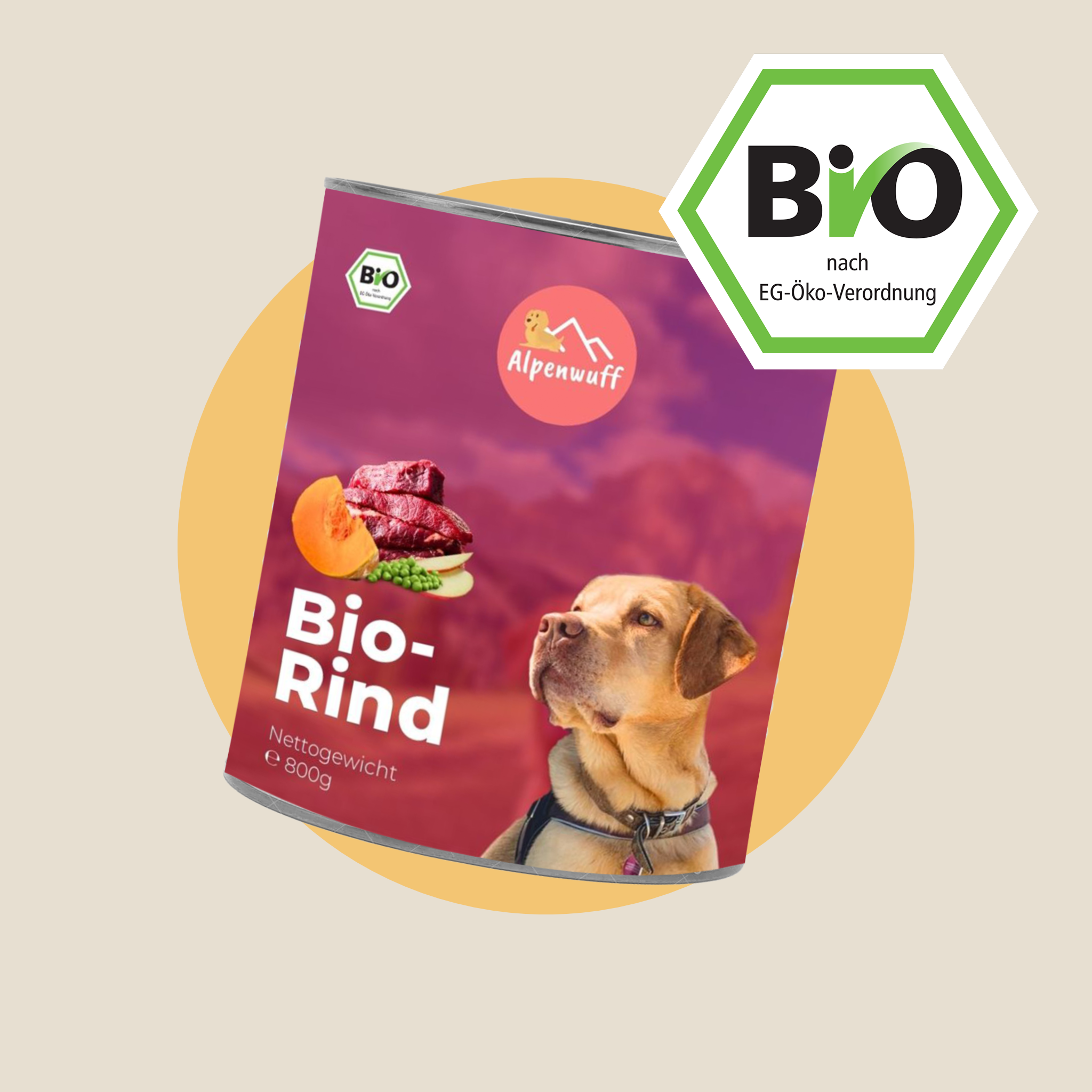
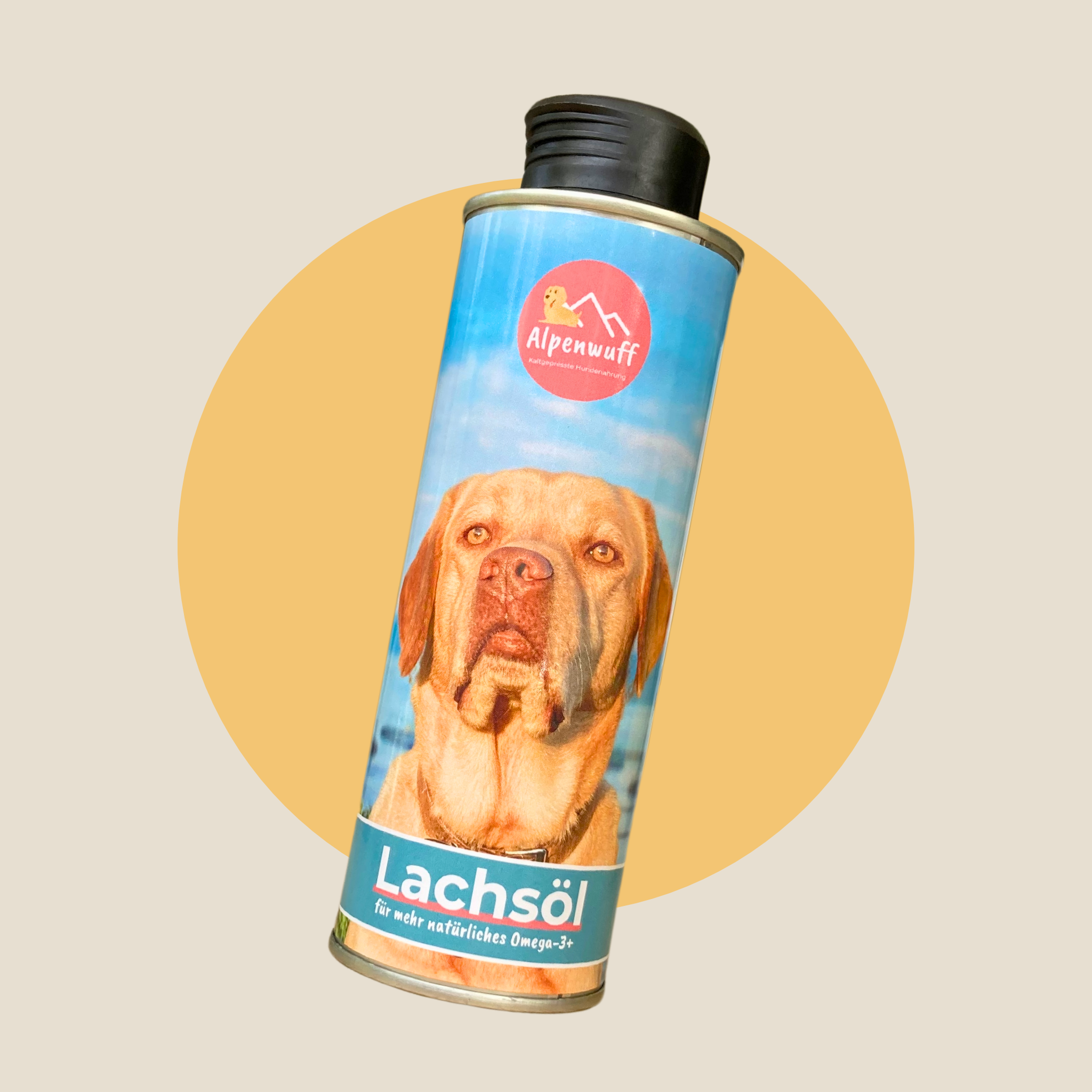



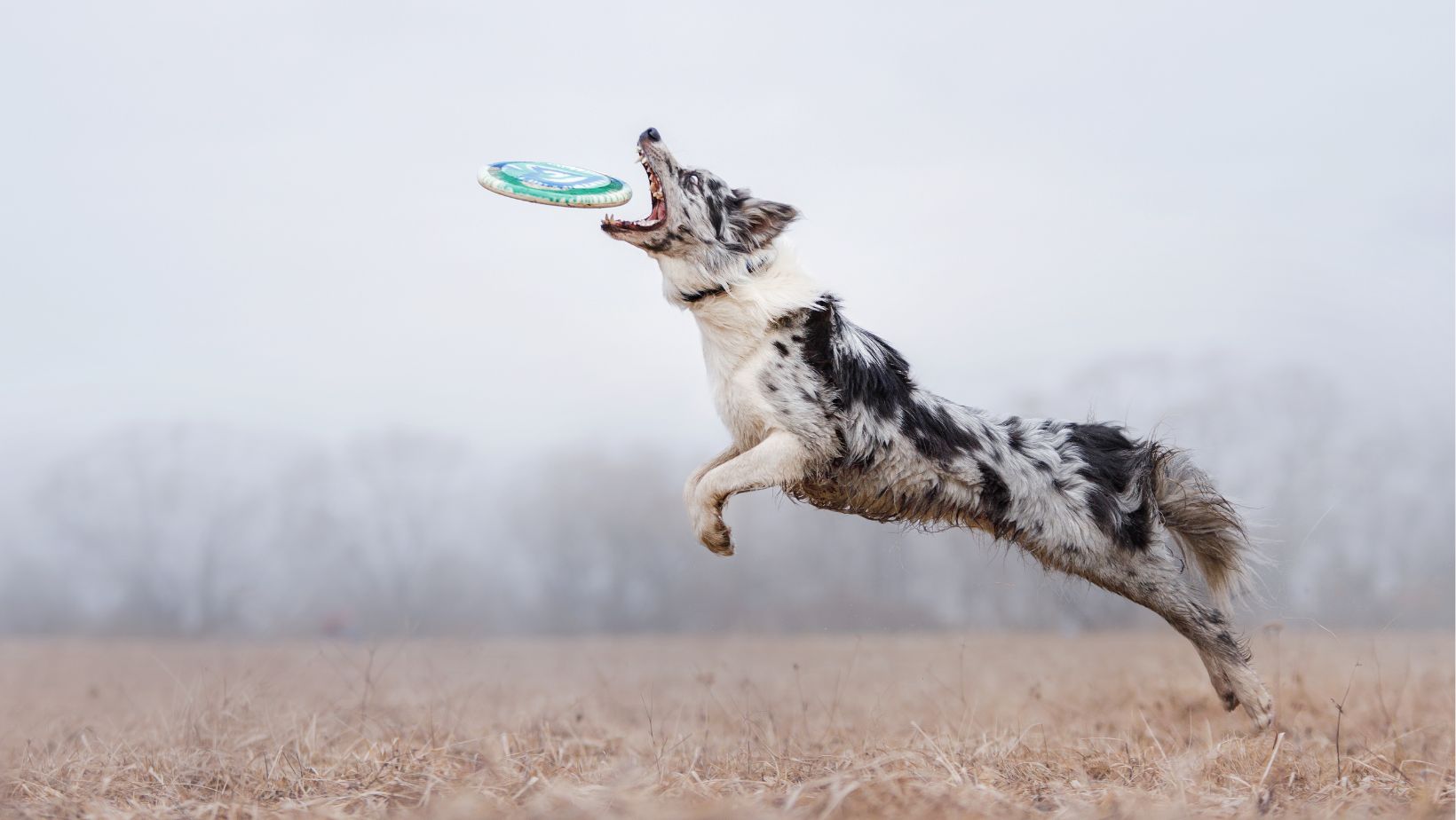
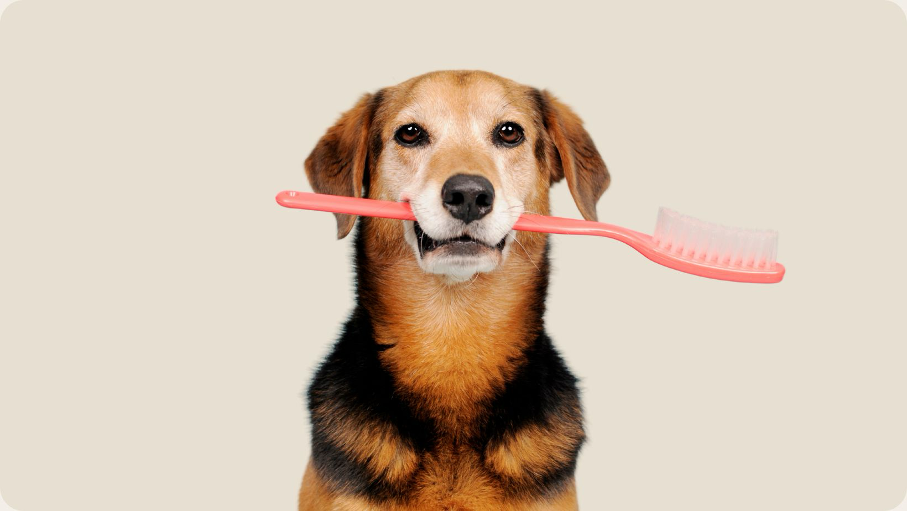
Leave a comment
All comments are moderated before being published.
This site is protected by hCaptcha and the hCaptcha Privacy Policy and Terms of Service apply.